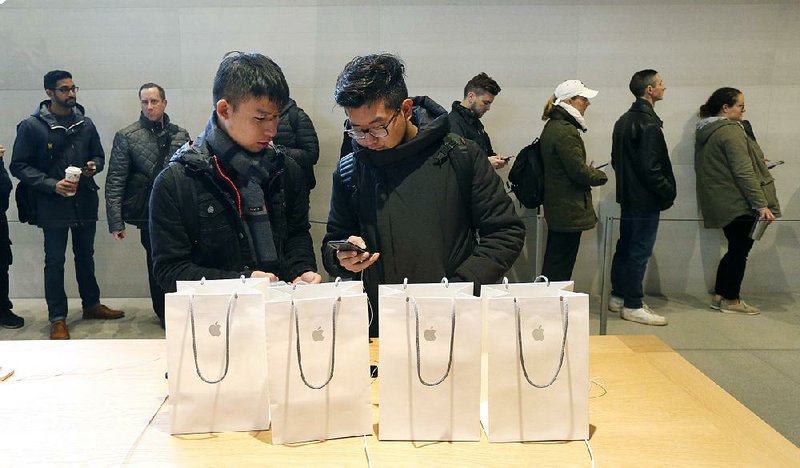WASHINGTON -- U.S. retail sales rose at a solid pace last month, as bullish consumers bought more cars, furniture and clothes.
Retail sales increased 0.2 percent in October, the Commerce Department said Wednesday, after a healthy 1.9 percent gain in the previous month. September's gain was the largest in 2½ years and was driven by big increases in auto and gas sales in the wake of hurricanes Harvey and Irma.
Americans are spending more freely as confidence in the economy has jumped in the past year and the unemployment rate is at a 17-year low. Excluding sales at gas stations, which fell sharply as prices dropped, retail sales rose 0.4 percent last month.
Sales gains were widespread. Consumers spent more at electronics, grocery, clothing and sporting goods stores. Restaurants and bars reported a healthy 0.8 percent increase, the biggest gain since January.
Nine of 13 major retail categories showed month-over-month increases in the value of sales.
So-called retail-control group sales, which are used to calculate gross domestic product and exclude food services, auto dealers, building materials stores and gasoline stations, advanced 0.3 percent after an upwardly revised 0.5 percent increase in September.
Americans are spending more, but incomes are rising only modestly. That has pushed more people to borrow to finance their purchases, particularly of autos. That has renewed worry about whether U.S. households can stay on top of their burgeoning debt loads.
Auto loans and credit-card debt rose sharply in the July-September quarter, according to a report Tuesday by the Federal Reserve Bank of New York. That pushed total household debt to a record high of nearly $13 trillion.
The proportion of Americans falling behind on their credit-card bills rose to 4.6 percent, the New York Fed said, up from 4.4 percent a year earlier. The share of auto loans that are 90 days or more overdue rose to 2.4 percent from 2.3 percent. Still, low interest rates mean that U.S. households' debt payments, on average, aren't historically high.
Gas station sales figures fell 1.2 percent last month, the retail sales report showed, mostly because prices nationwide dropped 2.4 percent. That is a reversal from September, when gas prices spiked 13 percent in the wake of the hurricanes, which disrupted refineries on the Gulf Coast.
Auto sales rose 0.7 percent, a solid gain after a huge jump of 4.6 percent in September. Sales are likely still elevated by the affect of the hurricanes, which destroyed thousands of cars in Texas and Florida that are steadily being replaced.
The broad-based advance in October sales and a stronger handoff from an upwardly revised September show American consumers will continue to fuel the economy in the fourth quarter. Steady hiring, rising asset values and limited inflation are underpinning consumer spending.
Information for this article was contributed by Bloomberg News.
Business on 11/16/2017
